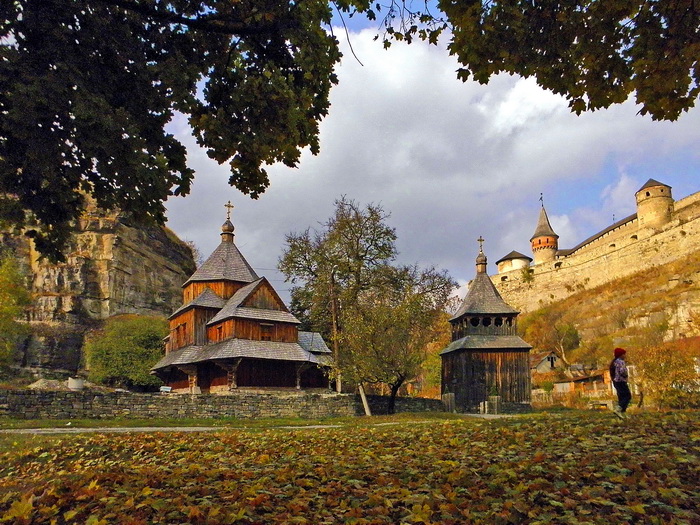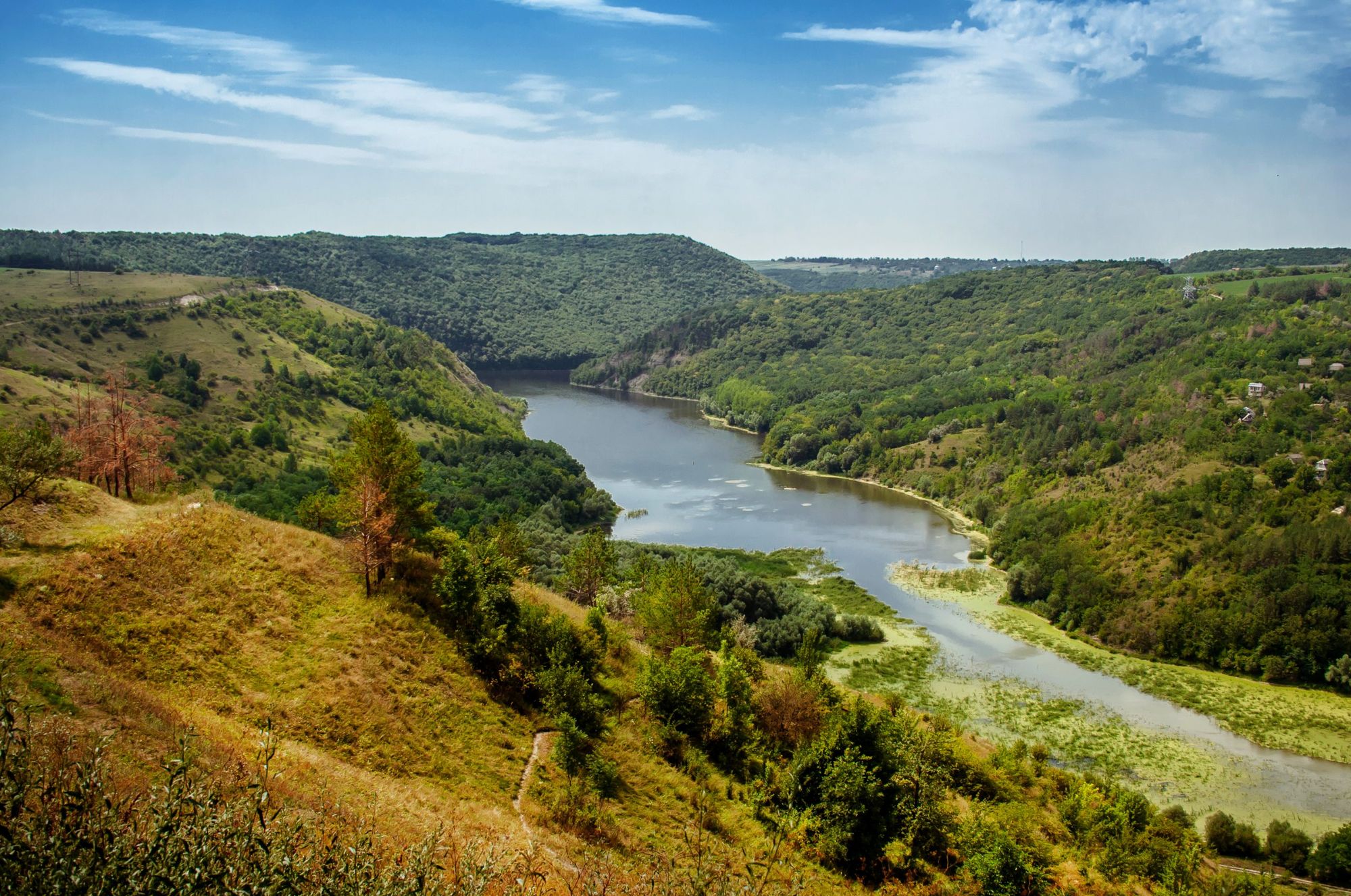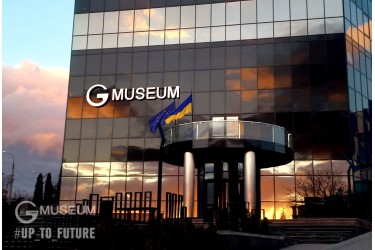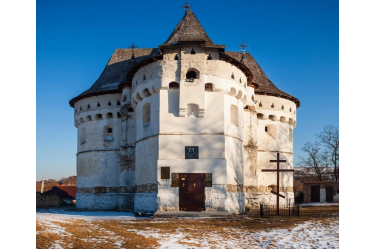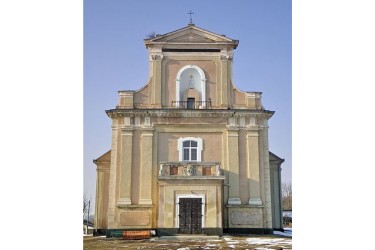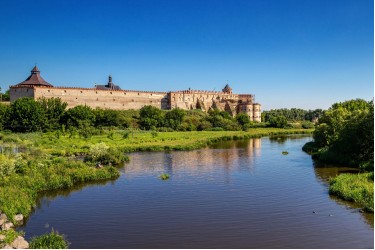“Golden Valley” is the name of the area near the Dnister River and its tributaries. It is wonderful and unique side with a mild climate reminiscent of the Mediterranean. This heavenly land is rich in healing springs, which generously give good water to the thirsty ones. At any time of the year the unique landscapes of Podilski Tovtry National Nature Park delight the eyes with their unique beauty.
Here are breathtaking landscapes, emerald forests, mountains with rare vegetation, magnificent nature, clean air, full-flowing the Dnister River – all this makes an unforgettable impression and creates excellent conditions for recreation.
The first stop of the tour in Kytaihorod village
Church of the Visitation of Elizabeth by the Blessed Virgin Mary
In the 18th century, the owner of the estate, a gentleman from the Pototskyis family, married a Ukrainian Orthodox girl for great love. The gentleman was very proud of his wife beauty and intelligence, and they often went to visit the neighboring landowners. But once trouble happened: suddenly the horses rushed, the wheel in a carriage came off and the fate carried couple to the terrible abyss. They took their unhappy hands to God, asked for mercy from the Mother of God and the saints, whispered prayers… And a miracle happened: the carriage stopped at the very edge of the terrible abyss and threw the passengers, then the cart fell off a cliff and crashed. The lord, gladding for salvation, swore to build church in this blessed place, higher than all churches of Kamianets-Podilskyi.

Manor of the Pototskyis
In 1607 Count Andrii Pototskyi received from the king Kytaihorod village. His son Stanislav built the estate on the very edge of a canyon. This estate became a continuation of the fortifications of the town – on a high hill stood castle, church, Catholic church and the estate. Until 1938 the building housed agricultural school (technical school). Until 1989 school was located in the building. Currently, the placement is collapsing.
Remains of Chumak Way
A narrow cape leads to the canyon of the Ternavka River, surrounded on both sides by large, steep, almost sheer slopes. An ancient paved road runs along its ridge, part of which on the steep slope above the abyss is a remnant of a medieval trunk road, which our ancestors called Chumak Way. There were guards on the road, leading to the castle, who asked: “Koni chyi?” (Whose horses are these?). That is why the road is called Konechyia. It is famous first of all for its large 200-year-old pillars along the roadside.

Kytaihorod exposure
It is a geologic natural monument of national importance in Ukraine. This is one of the world most complete sections of the Silurian and Devonian sedimentation. Here is discovered (exposed) unique geological sedimentation, which form steep walls up to 100 m high, about 1.2 km long, with an area of 60 hectares and create a unique inimitable landscape. The age of the sediments is 400-600 million years, they contain numerous remains of fossil plants and animals. Its uniqueness lies in the fact that only here you can see a complete section of the Silurian sedimentation. This geological and paleontological monument is the only one in Europe.

Healing springs of Kytaihorod region
Old legends say that the Mother of God walked in Kytaihorod region and holy healing springs appeared where she had stepped. Ochnyk is the most powerful spring, the way to which through the streets of Kytaihorod show instructions. Near the spring and in front of it, people saw recesses on the stones, resembling a human foot.
Heron Reserve
Heron Botanical Reserve of National Importance is part of the Podilski Tovtry National Nature Park and has an amazing flora and fauna – many species that live here are listed in the Red Book of Ukraine. The local residents named the place “Heron”, because its outlines really resemble this graceful bird.

Subich rocks and rock monastery
Subich rock monastery has been known since the 16th century, although the first cells were carved in stone in the 10th-13th centuries. The monastery is called the younger brother of Bakota monastery. The monastery is located in the tract of Mount Kempa at a height of 40 meters above the Dnister River. An 800-meter steep descent along a narrow path leads to the caves from the chapel on the edge of Subich village; there are has several springs by the road, one of which is healing. Festive divine service is held on the monastery territory during the feast of Maria Magdalena (August 4).
Church of the Intercession of the Blessed Virgin in Vykhvatnivtsi village
The church in this village appeared in the first half of the 18th century in honor of the Assumption of the Virgin – first covered with straw, and later – wooden, with three domes, built at the expense of parishioners. In 1791 the church became Church of the Intercession. In 1839 the church burned down because of a candle that was not extinguished in the church. Two years later new wooden church was built in its place, which still exists. At first it was covered with shingles on the outside, but now it is covered with tin, so looking at the church, it is hard to believe that it is really wooden. However, it is enough to go inside to see the antiquity of the spiritual structure.
Granite slab with the image of an archer
An inscription on the monument states that in January 1526, archer detachment left the castle in Kytaihorod for Moscow, guarding Princess Olena Hlynska, the future ruler of the Russian State and the mother of Tsar Ivan IV the Terrible. And the Moscow stone Kytaihorod (Chinatown), built in 1537 in wooden Moscow by Olena, is not named after the Chinese or China, but in memory of Kytaihorod village – her small Homeland.
Lionovychs’ Stone
Near Dereviane village is a rock called Lionovychs’ Stone. It got its name from the Lionovych family, who left the village community during the Stolypin agrarian reform and took a plot of land adjacent to the rock. There are huge boulders of bizarre shapes scattered over a large area. There are also many grottoes and caves.
Returning to Khmelnytskyi

